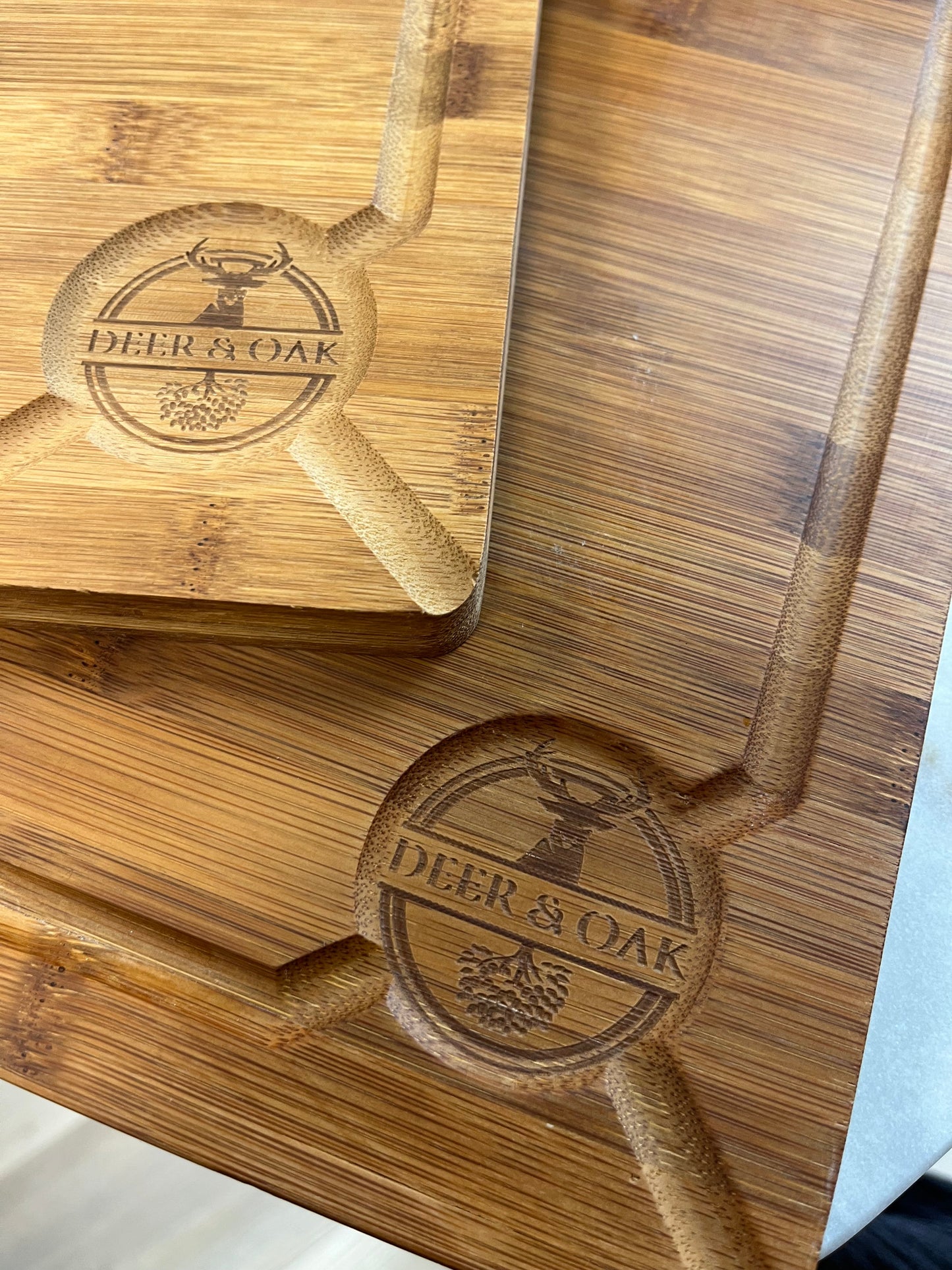
Carbonised vs Regular Bamboo Cutting Boards: What’s the Difference?
When it comes to choosing the right cutting board, the material matters. More than ever, home cooks are looking beyond plastic in favour of more sustainable, high-performing surfaces. Among the top choices are bamboo boards — both standard and carbonised. In this article we’ll compare carbonised bamboo vs regular bamboo, highlight why each is significantly better than plastic, and help you decide which is the best fit for your kitchen.
What is a Bamboo Cutting Board?
Regular Bamboo Boards
Bamboo is technically a grass, not a tree, which means it grows quickly and renews rapidly. Regular bamboo cutting boards are built from strips of bamboo that are glued and pressed together, giving a durable surface. They are less porous than many woods, naturally antimicrobial, and more sustainable than plastic or slow-growing hardwoods.
Carbonised Bamboo Boards
Carbonised bamboo refers to bamboo that has undergone a thermal treatment to darken the colour, reduce moisture content, and alter certain physical characteristics. The process gives a rich caramel or chocolate tone and may deliver additional surface stability and stain resistance.
Carbonised vs Regular: Key Differences
Appearance & Colour
- Regular bamboo: Light-to-medium golden hue with natural grain.
- Carbonised bamboo: Darker, richer brown tone due to the thermal process.
Durability & Stability
Carbonising reduces moisture content and enhances stability, though regular bamboo is also highly durable.
Environmental & Processing Considerations
Both are sustainable, but carbonised bamboo requires additional thermal processing.
Cost
Carbonised bamboo boards usually cost slightly more due to the extra processing.
Knife-Friendliness & Maintenance
Bamboo is harder than some woods and may be slightly more abrasive, but with proper care, both types are excellent for regular kitchen use.
Why Both Bamboo Options Are Better Than Plastic
- Hygiene: Bamboo is less porous than many plastics and resists bacteria build-up.
- Durability: Bamboo resists grooves and moisture damage better than plastic.
- Sustainability: Bamboo regenerates quickly and doesn't shed microplastics.
- Aesthetic: Bamboo can double as stylish serving boards, unlike most plastics.
How to Choose Between Carbonised and Regular Bamboo
- Budget: Regular bamboo offers great value.
- Aesthetics: Carbonised offers a premium look.
- Usage: Carbonised may resist warping better with heavy use.
- Eco-focus: Regular bamboo involves less processing.
- Quality: Look for boards with food-safe adhesives.
See a carbonised bamboo cutting board on Amazon UK
Visit Deer & Oak for more bamboo board options
Care & Maintenance Tips for Maximum Longevity
- Hand wash with mild soap and warm water.
- Dry immediately after washing.
- Oil with food-grade mineral oil regularly.
- Never put in the dishwasher.
- Sand and re-oil if grooves appear.
FAQs
Is carbonised bamboo safe for food prep?
Yes, provided it's made with food-safe adhesives. The carbonisation process is non-toxic.
Can bamboo boards harbour bacteria?
They resist moisture and bacteria better than plastic, especially when maintained properly.
Will bamboo boards dull my knives?
They are harder than some woods but safe for typical home kitchen use.
How often should I replace my bamboo board?
With care, they can last years. Replace if grooves or warping occur.
Why not just use plastic boards?
Plastic can harbour bacteria, degrade quickly, and contributes to environmental issues. Bamboo is more hygienic and eco-friendly.
Conclusion
Both regular and carbonised bamboo cutting boards are excellent plastic alternatives. Your choice may depend on aesthetics, usage habits, or sustainability preferences. Either way, you’re making a better choice for your kitchen — and the planet.
You can purchase Deer & Oak kitchenware through our website at deerandoak.co.uk or through TikTok Shop and Amazon UK at amazon.co.uk
